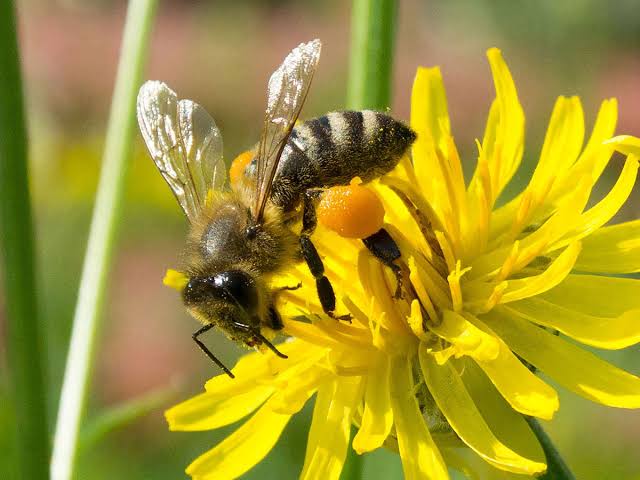World Bee Day: Some interesting facts about bees and honey
In honor of World Bee Day on May 20, here are some interesting things you might not know about nature’s hardest-working pollinators.
- A single bee weighs .00025 pounds. 4,000 bees together weigh only one pound. Each of our hives has 50,000 bees, weighing 12 pounds together.
- A single bee can produce 1 tablespoon of honey in its lifetime. 683 bees fly roughly 32,550 miles to gather 5.93 lbs of nectar from about 1,185,000 flowers in order to make one 9.5 oz. jar of Big Island Bees’ honey!
- Bees can fly up to 12 mph. On every foraging trip, a bee will visit 50-100 flowers to collect nectar!
- Bees heat and cool their own hive to keep it between 93 and 95 degrees year-round. Bees are cold-blooded and must keep their hive at a constant temperature. In cold weather, bees keep the hive warm by swarming together to generate body heat and by sealing cracks in the hive with propolis. In warm weather, the bees collect water and line up in a circle around the hive entrance. Using their wings, the bees fan the water so that it evaporates into the air. They then fan the cool air so that it circulates around the hive as a sort of central air conditioning.
- A Queen Bee will lay 800,000 eggs in her lifetime! The queen’s life is dedicated to reproduction and she only leaves the hive once in her life in order to mate.
- Bees are remarkably tidy. Bees are very meticulous. They groom each other and keep their hive incredibly clean.
- The hexagonal shape of the honeycomb is the most efficient shape in our world.The pattern allows for the cells to be packed with no empty space in between. Though the wax is thin and delicate the structure of the hexagonal cells can hold a tremendous amount of weight.
- Bees communicate by dancing!
Since bees are deaf, they don’t use verbal language to communicate. Instead, they dance to share information and to make requests. (Bees receive the input both by sight and by feeling the vibrations dancing bees cause). Round Dance: Purpose is to inform other bees of nectar within 10 meters. In this dance, the bee runs in small circles. They have Cleaning Dance, which purpose is to ask another bee for a grooming. In this dance, the bee stamps her feet and shakes her body. Joy Dance which purpose is to celebrate, for example, when a new queen emerges from her cell. In this dance, the bee places her front legs on one another and pulses her abdomen up and down. ETC - Bees are known to raid other hives and steal honey! Bees “rob” honey from other bees if honey from another hive is available (say, if a beekeeper leaves a hive open), or if times are lean. However, if a guard bee from the robbed hive catches an interloper (detecting the foreign smell of the intruder), the two will engage in battle—stinging to the death. If the robber makes it into the hive unnoticed, she will gain the scent of the hive (and learn the entrance well enough) that she can come in and out without being detected as an intruder.
- A Bee’s diet consists of honey and pollen. Honey and pollen are the building blocks of a bee’s diet. Bees eat honey because it provides them with energy-laden carbohydrates, while pollen’s protein provides bees with essential amino acids. But, the Queen’s diet is richer in honey…which gives her fertility. The queen’s staple food is a special honey and pollen mixture called “royal jelly.”
- Royal jelly contains more pollen and honey than larval jelly (the food eaten by worker and drone bees). The phrase “you are what you eat” is especially fitting here, since the queen would be infertile and indistinguishable from smaller worker bees if it weren’t for the added carbohydrates in royal jelly.
Follow the Neptune Prime channel on WhatsApp: https://whatsapp.com/channel/0029Va74ZvU2v1IqKByXoX3d
Do you have breaking news, interview request, opinion, suggestion, or want your event covered? Email us at neptuneprime2233@gmail.com


